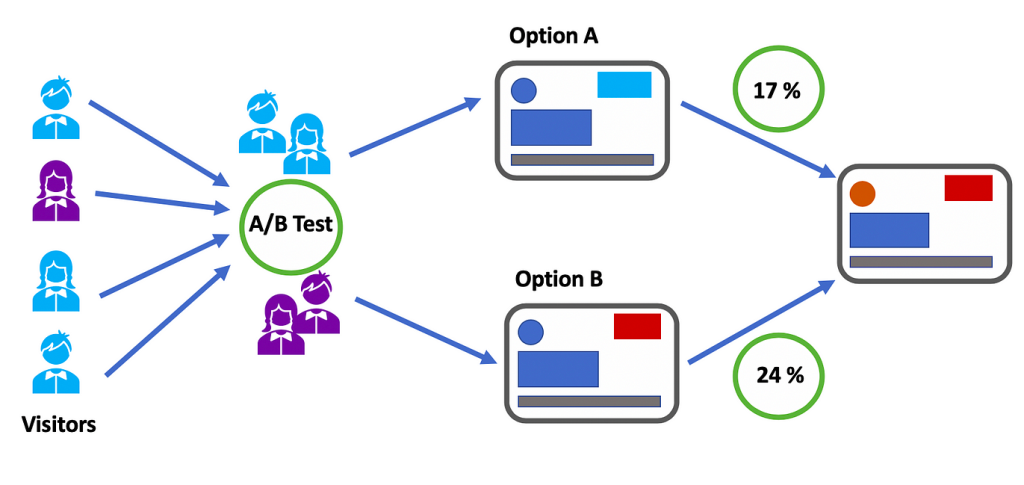Growth Hacking Unleashed: Transforming Business Growth in the Modern Era
Growth hacking: two words that have redefined the way businesses grow, adapt, and succeed in the digital landscape.
Quick Links
This isn’t about buzzwords or complex theories; it’s about fueling the engine of enterprise with data-driven strategies and inventive marketing. As digital marketers, it’s time we dive into how this transformative approach, revolutionizing every nook and cranny of business growth, is not just reshaping our roles but redesigning the entire game of competitive advantage.
Let’s navigate the ins and outs of this methodology, understand its profound implications, and demystify how to wield this powerful tool to propel your business into new realms of success.
Growth hacking is more than a strategy—it’s a new marketing paradigm for the modern era.
What is growth hacking?
Growth hacking is a smart approach to growing your business. It’s about finding the fastest, most effective ways to attract and keep customers. The secret sauce of growth hacking involves creativity, analytical thinking, and a dash of social metrics.
Let’s break it down with a simple example. Imagine you run a small online bookstore. Traditional marketing would suggest advertising your books, running promotional campaigns, or partnering with authors for book signings. These are great strategies but they might not always deliver the rapid growth you’re looking for.
Enter growth hacking.
Instead of traditional methods, you decide to create a feature on your website that allows customers to preview a chapter of a book for free. This ‘hook’ encourages people to visit your site, and once they are hooked on a chapter, they’re more likely to buy the full book. You could also add a feature that allows customers to share their favorite books or recommendations on social media, driving more traffic to your website, and hence, more potential customers.
The idea is to use inventive, cost-effective strategies to grow your business quickly and sustainably. Growth hacking isn’t a one-size-fits-all, but rather a process of testing, analyzing, and optimizing strategies to achieve the best results. It’s all about understanding your customers, meeting them where they are, and delivering value that keeps them coming back.
A step-by-step approach to creating a growth hacking strategy
- Define Your Goal: What does growth look like for your business? More users? More revenue? Higher customer retention? Pin down a specific, measurable, and achievable goal.
- Understand Your Audience: Identify who your target customers are. What are their needs, pain points, and desires? Use surveys, interviews, and data analysis to get a deeper understanding. Do as many conversations with them as possible to get deep insights into their behaviors. This will help you craft the right messaging when launching your campaigns.
- Analyze Your Sales Funnel: Look at every step a customer takes from the moment they discover your product to the point they make a purchase. Where do potential customers drop off? What can be improved?
- Generate Ideas: Based on your goal, audience, and sales funnel analysis, brainstorm ideas for growth. These can be new marketing techniques, product features, or customer incentives. Aim for tactics that are innovative and low-cost but have a high potential impact.
- Prioritize Your Ideas: Not all ideas are created equal. Rank them based on potential impact, ease of implementation, and cost. Use a framework like the ICE Score (Impact, Confidence, and Ease) to help prioritize.
- Test Your Ideas: Implement one idea at a time and measure its performance. This could involve A/B testing, where you try two versions of a feature or a webpage to see which performs better.

Source
- Analyze Results: After testing an idea, analyze the results. Did it bring you closer to your goal? Use quantitative data (like conversion rates or user numbers) and qualitative data (like user feedback).
- Optimize and Iterate: Based on your analysis, refine your idea and test it again, or move on to the next one. Growth hacking is a cyclical process of testing, learning, and optimizing.
- Scale Successful Tactics: Once you’ve found a tactic that works well, it’s time to scale. This might mean reaching out to more customers, investing more in a successful feature, or implementing the tactic across different areas of your business.
5 Tips for successful growth hacking
Growth hacking is all about smart, innovative strategies to drive rapid and sustainable growth. By following these tips and leveraging technologies you can put your business on the fast track to success.
- Utilize Technology: Leverage technology like a VoIP business phone system to improve communication, optimize operations, and deliver better customer service. This can be particularly helpful for businesses with remote teams or international clients.
- Leverage Referral Mechanisms: Word of mouth remains one of the most effective growth tools. Encourage referrals by incentivizing current users to bring in new ones.
- Build Virality: Design your product or service to have inherent virality. This could be through shareable content, social media integrations, or unique features that users naturally want to talk about.
- Prioritize Retention: Acquiring a new customer is often more costly than retaining an existing one. Focus on building features or providing content that keeps users engaged over the long term.
Examples of companies that utilized growth hacking to transform their business
Each of these companies found clever, low-cost ways to attract and retain more users, proving the power of growth hacking.
- Dropbox: They offered extra free storage space to users who referred their friends. If you invited a friend and they signed up, both of you got more space. Result? More users quickly joined Dropbox.

- Airbnb: Instead of asking people to list their homes only on their website, they allowed users to cross-post their listings to Craigslist with a simple click. This tapped into Craigslist’s huge audience and drove massive traffic and listings to Airbnb.
- Hotmail: At the end of every email sent by a Hotmail user, they added a line that said, “PS I love you. Get your free email at Hotmail.” This simple tactic turned their users into promoters and led to a rapid increase in sign-ups.

- Slack: They focused on making a product that teams loved. Happy users often became brand evangelists, telling other businesses about Slack. Word-of-mouth drove their growth, making them a leading communication tool.
Final thoughts
As we navigate the ever-evolving digital landscape, it’s clear that traditional tactics alone won’t cut it. The success stories of companies like Dropbox, Airbnb, and Instagram demonstrate that innovative growth strategies can lead to monumental shifts in business trajectories.
As we wrap up, don’t just marvel at these stories—take inspiration. Start looking at your own business model, audience interactions, and potential partnerships. There’s always room for growth; sometimes, it just requires a fresh perspective and the courage to think outside the box. What’s your growth hack going to be?
Author bio:

Trevor is a SaaS growth consultant and managing partner of Ring4. He leads the product development and drives innovation for building the best light-weight business phone solution in the cloud.
What Is WooCommerce Product Slider and Why Your Store Needs It
Why Do Product Images Matter So Much in Online Stores? When someone visits an online store the…
0 Comments9 Minutes
How to Streamline Your Customers’ Shopping Experience?
The goal for any online store is to make shopping as smooth as possible. When visitors move…
0 Comments8 Minutes
Strengthening Brand-Customer Relationships Through Gamified Loyalty Programs
Creating lasting connections with customers has become increasingly vital as the marketplace grows…
0 Comments6 Minutes
How to Use SEO and SEA Together in Search Engine Marketing
In digital marketing, search engine marketing (SEM) plays a critical role in improving online…
0 Comments10 Minutes
Content Marketing Growth Hacks: Real Shortcuts to Drive Traffic
Are you still lagging in content marketing? Sticking to these old strategies seems…
0 Comments10 Minutes
How to Build a Strong Local Following Using Social Media Marketing
In the days of likes, shares, and stories, local businesses have a golden opportunity to create…
0 Comments9 Minutes
Why WooCommerce is the Best Choice for Your Online Store?
WooCommerce stands out as a top option for anyone looking to build an online store. This platform…
0 Comments8 Minutes
How to Use AI-Powered SEO Tools for WordPress eCommerce
SEO is a critical factor in the success of any e-commerce WordPress store. As competition…
0 Comments11 Minutes








